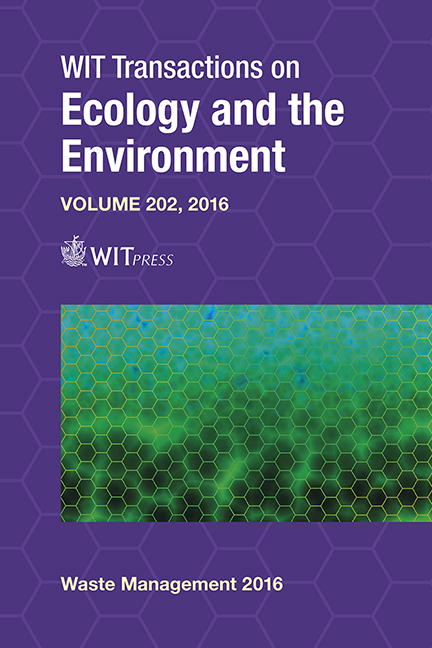Evaluation Of The Influence Of Method Preparation In Properties Of Heterogeneous Ion Exchange Membranes
Price
Free (open access)
Transaction
Volume
202
Pages
10
Page Range
391 - 400
Published
2016
Size
1,347 kb
Paper DOI
10.2495/WM160351
Copyright
WIT Press
Author(s)
N. C. Martins, L. B. Rodrigues, F. T. do Nascimento, G. M. da Silveira, J. F. Corte, M. V. Flach, M. A. S. Rodrigues, F. Celso, V. D. Jahno, R. M. de Martins
Abstract
In order to produce membranes with good features, this study aimed to evaluate the influence of the method of preparation of heterogeneous anion exchange membranes (AEMs). Membranes were prepared by spread coating and casting methods. In the latter method, different solvents were used: tetrahydrofuran (THF) and dimethylformamide (DMF). Membranes with different quantities of anion exchange resin (AER), 50% and 35%, were prepared. The characterization of the AEMs was performed by means of conductivity, ion exchange capacity (IEC) and swelling. Membranes prepared by coating showed lower conductivity, possibly due to the degradation of some functional groups of the AER during processing because of high temperatures. Evaluating the solvent influence, the membrane obtained in DMF had the highest conductivity. The IEC of membranes prepared by casting method was very similar, showing that this is not a parameter influenced by solvent exchange. It was noted that coated membranes had lower IEC, reinforcing the hypothesis of losing functional groups during processing. Finally, membranes prepared using THF as solvent showed higher swelling than those using DMF because THF evaporates quickly leading to the formation of small voids where water accumulation is favored. The coated membranes had the lowest swelling since these membranes do not use solvent in their preparation. Lastly, it can be inferred that the choice of the methods and/or the solvents can modify AEMs properties. Among the methods, the most satisfactory was casting due to the possibility of functional group loss by thermal degradation during the coating process. Concerning the solvents, DMF has been demonstrated the best one for casting process since it does not provide large voids which increase the swelling and reduce the conductivity. Ultimately, the best membrane was obtained by casting method with 50% of AER with conductivity, IEC and swelling of 2.17.10−3 S.cm−1, 1.58 meq.g−1 and 59.8%, respectively.
Keywords
anion exchange membrane, membrane preparation, membrane characterization, method effect, solvent effect





